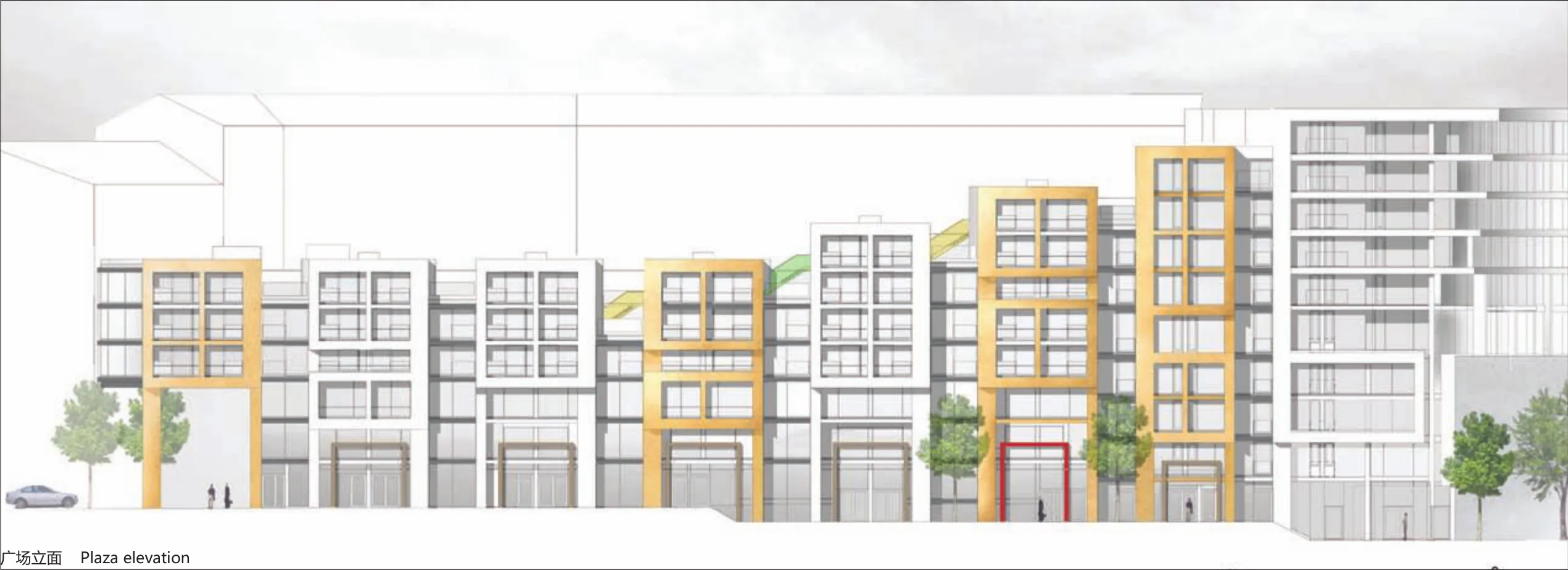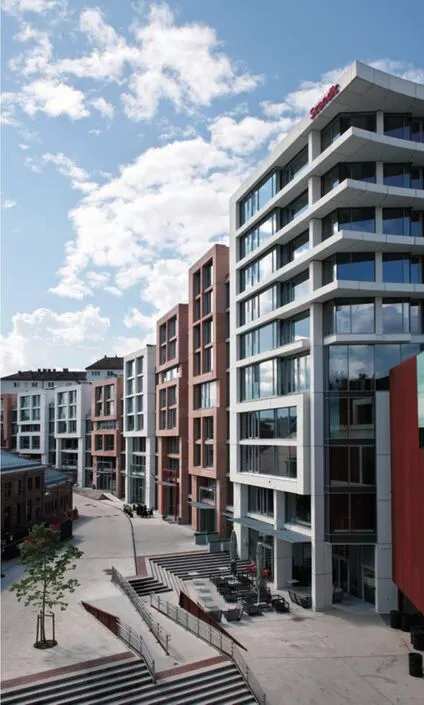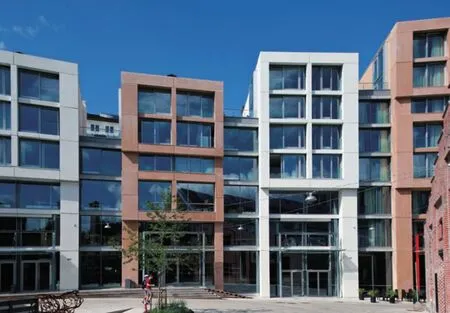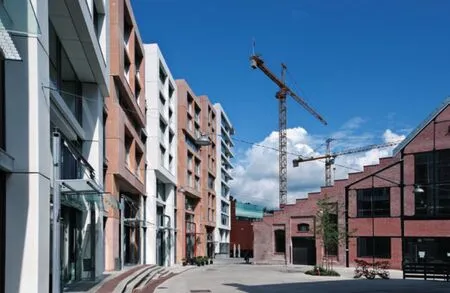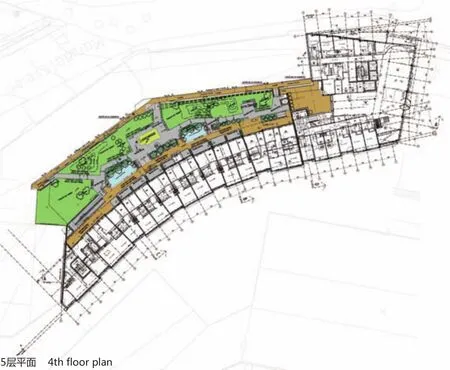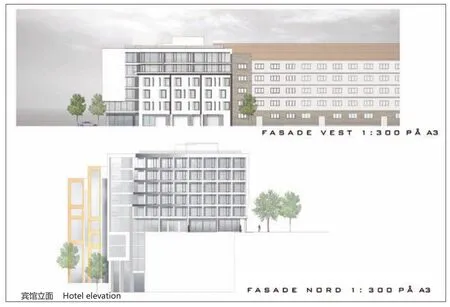福尔康综合体建筑
2014-01-26
地点:挪威奥斯陆
建筑类型:宾馆、住宅、商业
面积:9 400m²
年份:2011年
Location: Oslo
Building type: Hotel, housing, commercial
Size: 9 400m²
Year: 2011
该项目包括一个酒店、艺术家公寓、办公室及一个集工作坊、酒吧及餐馆于一体的综合体,位于奥斯陆心脏地带阿克尔河主河道旁较低街区集市般的结构中。
该建筑旨在为主干道“城镇楼层”与河畔旧工业建筑旁边规划中的文化广场的迥异变化形成一个过渡。
该项目的精品酒店有130间客房,一个酒吧以及有100个餐位的餐厅,可欣赏到河流景观。
商业楼层则设计为当地的办公室及工作室。
下层空间则用于本地艺术家的工作坊、各种餐馆、酒吧及带有餐桌的大型咖啡厅/餐厅用,并向外延展至广场上,在较低的街道上形成聚焦中心。
规划好的公寓、复式楼和工作室位于较小的块状结构的4个楼层上。
主要的挑战则是要在目前仍占主导地位的二十世纪40年代的较高楼层的建筑和十九世纪90年代之交具有吸引力的砖钢结构河滨工业大厦之间构筑一个过渡。酒店从路旁至高点逐渐以可控的形式向河边伸展,比起通常的场地线更能给现有建筑提供更大的视野和采光,而不影响最大区域。
项目在上层街道平面现存的40年代街区的绵长外立面上形成了一个戏剧性的结束,创造了进入文化广场的入口。
建筑物温婉的弧形运动曲线打破了原有的限制,并为现有的建筑及已规划的文化广场都提供了一个坚实稳定的背景。
其结构主要是钢与混凝土面板,用水泥纤维板覆层包覆并初涂。
在现有的1940年代街区及新方案之间过度建设的屋顶面积形成了一个有吸引力的公共花园。北端一个栽种了植物的露台为餐厅及前台通向公共花园提供了入口。
The project comprises a hotel, artist’s apartments, of fi ce and with a mixture of workshops and bars and eateries in a bazaar-like structure at the lower street level along the main Aker River running through the heart of Oslo.
The building aims to negotiate a transition through steep terrain between the main road, “the fl oor of the town”, and the planned cultural square in and around the old industrial buildings along the riverside.
The compact hotel accommodates 130 rooms, a bar and 100 seats restaurant with views to the river.The commercial fl oors are intended to serve as local of fi ces and studios.
The lower level spaces are intended for use as workshops for local artists and various eateries and bars with the tables of a large café/restaurant spilling out onto the square to form a focal point at lower street level.
There are also programmed apartments, duplex and studios in the 4 fl oors of the smaller block-like structures.
The primary challenge was to create a mediator for the existing dominant 1940s blocks at upper ground level and the attractive brick and steel industrial riverside buildings from the turn of the 1890s without extinguishing either. The hotel starts roadside at it’s highest point, and steps gradually downwards toward the river in a controlled manner that offers greater views and light to the existing buildings than the regulated site lines would have allowed without affecting the maximum area.
The project forms a dramatic ending to the long façade of the existing 40´s blocks at upper street level creating a portal to the cultural square.
The building’s gentle curving motion envelopes and gives a stable backdrop to both the existing buildings and the programmed cultural square.
The structure is primarily steel with concrete slabs, clad with cement fi bre board cladding and render.
The roof of the overbuilt area between the existing 1940s blocks and the new scheme forms an attractive communal garden. At the northern end a planted terracing opens the restaurant and reception to the communal garden.
